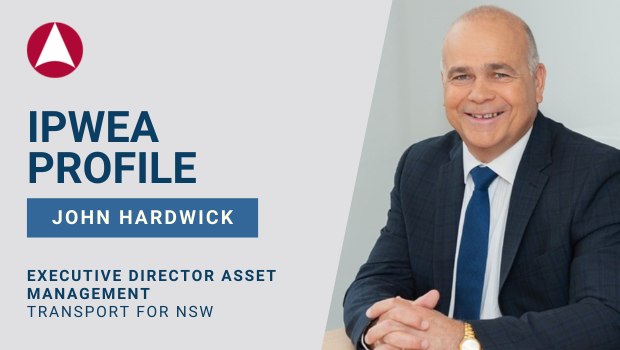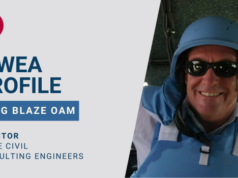John Hardwick recalls the moment he realised that asset management was no longer just his job, but his hobby. “It was when all of my personal time was taken up with meeting people from around the world who were in asset management,” he says.
“When the Global Forum (of Maintenance and Asset Management GFMAM) kicked off we were still using modems and in the middle of the night I would be meeting with the chairperson, who was in Germany, trying to put the rules together for establishing this new organisation.”
Hardwick doesn’t begrudge the way asset management started taking up his free time.
He is a passionate advocate for the profession and its potential to “help transform third world nations into first world” and alleviate poverty.
By his own admission “at the back end” of his career, Hardwick is now leveraging four decades of experience in the energy and transport infrastructure sectors in New South Wales along with around fifteen years leadership experience in international organisations such as the GFMAM, the Asset Management Council and World Partners in Asset Management.
After beginning his career as an apprentice electrical fitter in the NSW power industry he progressed into management roles, leading large field teams before being tasked to look at transforming technical and maintenance standards.
“It was the late 1990s in New South Wales and power assets were failing and Governments were stripping money out of the power industry,” he says.
“So I searched for what was being done in different parts of the world and that is when I realised that we were doing maintenance when what we needed to do was asset management.
“That is when I met people at the Maintenance Engineering Society of Australia and my whole journey started in asset management.”
The journey included an MBA and Company Director qualification, and then chairing national and international not for profit organisations – some roles he still holds today.
In the “day job,” Hardwick joined state government body Transport for NSW seven years ago and is now Executive Director of Asset Management, a remit which includes the long term custodianship of assets like one of Australia’s most iconic pieces of infrastructure the Sydney Harbour Bridge.
“It’s an interesting example, because past Governments have a build mentality and love to cut ribbons,” he says.
“They don’t want to say ‘we’ve just renewed an asset and given it another 100 years.’”
“But with the Harbour Bridge we need to keep it in perpetuity but it’s a steel bridge that is fully riveted over a saltwater harbour that corrodes everything and it’s about to turn 100, so looking at it gives you another lens on the asset management challenge.”
Last month the NSW Government announced an eight-year maintenance program to bring the iconic arch up to scratch for its centenary milestone in 2032.
One of the big – and positive – changes in asset management, says Hardwick, was the introduction of accrual accounting in the last 1990s.
Putting assets onto the balance sheet and ascribing a value to them enabled managers to quantify what was needed in terms of maintenance, and understand the benefits of renewal.
This was the beginning of combining finance with engineering and project management to create what is the rapidly evolving discipline of asset management.
“Asset management is about decisions around cost, risk and performance,” says Hardwick.
“It’s about what to spend money on, how assets are performing and getting a return and delivering an outcome.
“Across the world you see government’s failing with bridges and road systems because there is no discipline, and they just keep asking for money when really they should have allocated the ongoing costs to operate and maintain the Assets through life.”
Hardwick’s thinking has evolved over his career but he’s now of the view that asset management should be a standalone profession, with people gaining post graduate qualifications after doing undergraduate degrees in areas such as accounting or engineering.
“We are now across the individual professions and asset managers are the glue, or the knitting which brings together all the different parts of the organisation,” he says.
“I’ve been through a few stages with this but now my thinking is that it definitely needs to be its own profession.”
That includes spreading the word internationally through the GFMAM, which now has 16 different organisations as members, nine of which are now involved with World Partners in Asset Management for the development of a Global Certification scheme.
“I feel I have an obligation to work with these countries and advance Asset Management knowledge across the whole world in this area so that countries can have the capability to advance their economies, and can do this considering their own cultures,” says Hardwick.
“We want to build a globally recognised approach and engage with different countries where they can do it within their own culture.”
Hardwick’s other message is that the key to success lies in people.
“I’ve had different leaders who have supported me at various times in my career and I have realised that the only difference between success and failure for organisations is people,” he says.
“You can have good HR, good finance and asset management but if you don’t have good people, if they are not trained, and they don’t work together then your organisation will fail.”














